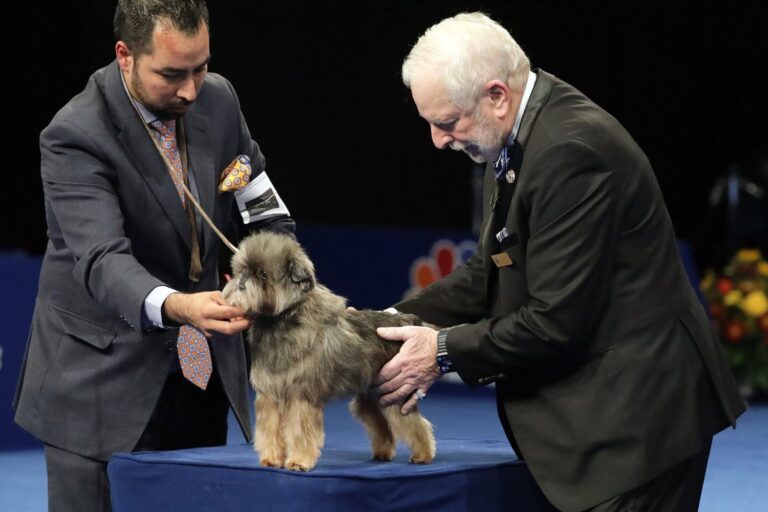Do you ever wonder what goes on behind the scenes at a dog show? The world of judging dog shows is a fascinating yet often misunderstood realm. In this blog, we will delve deep into the intricate process of judging these prestigious events. From breed standards to ring etiquette, we will uncover the secrets and expectations that judges follow to determine the best of the best. Whether you are a seasoned dog show enthusiast or a curious newcomer, this blog will provide you with insights and revelations that will change the way you view these competitions forever. Get ready to witness the truth about judging dog shows as we pull back the curtain on this exciting world!
Introduction: Understanding the World of Dog Shows
When it comes to judging dog shows, understanding the intricate world behind these events is crucial. These competitions bring together top breeds to showcase their skills and beauty, attracting enthusiasts and participants alike.
The History of Dog Shows
Dog shows have a rich history that dates back to the 19th century. Initially started as events to evaluate breeding stock, dog shows have evolved into elaborate displays of canine excellence and breed standards.
For over 150 years, these shows have captivated audiences worldwide, celebrating the diversity and talents of man’s best friend.
Key Components of a Dog Show
Modern dog shows consist of various classes including conformation, obedience, agility, and more. Each class evaluates different aspects of a dog’s abilities and characteristics, ensuring a comprehensive assessment.
- Conformation: This class focuses on a dog’s physical appearance and adherence to breed standards.
- Obedience: Tests a dog’s training and responsiveness to commands.
- Agility: Showcases a dog’s speed, agility, and ability to navigate obstacles.

History of Dog Shows: From Past to Present
Dog shows have a rich history that dates back to the 19th century. The first modern dog show was held in the UK in 1859, organized by Mr. R. J. Lloyd Price. Since then, dog shows have become a popular event worldwide, showcasing the beauty, agility, and obedience of various breeds.
Evolution of Dog Shows
Initially, dog shows were mainly about assessing a dog’s working abilities. However, over time, they evolved to focus more on conformation and breed standards. The renowned Crufts Dog Show, started in 1891, played a significant role in shaping modern dog shows.
In recent years, dog shows have incorporated various categories such as agility competitions, obedience trials, and junior handling classes, reflecting the diverse skills and talents of dogs.
Modern-Day Judging Dog Shows
Today, judging dog shows requires expertise in evaluating a dog’s physical attributes, movement, and overall adherence to breed standards. Judges follow strict guidelines set by kennel clubs and breed associations to ensure fairness and consistency.
Expertise is crucial for judges to accurately assess each dog’s qualities and choose the best representatives of their respective breeds.
:max_bytes(150000):strip_icc()/Wedding-etiquette-tips-for-brides-wedding-ceremony-etiquette_1000x1000_rev_04-887f5ac2d23e4c84a4c691e48adfa7d2.jpg)
The Role of Dog Show Judges: Behind-the-Scenes Insights
When it comes to judging dog shows, the role of the judges goes beyond just evaluating the physical appearance of the dogs. These experts play a crucial role in upholding breed standards, promoting responsible breeding practices, and ensuring fair competition.
The Judging Process
Dog show judges meticulously assess each dog based on specific breed standards set by kennel clubs. This involves evaluating conformation, movement, and overall temperament to determine the best representatives of their breeds.
Throughout the show, judges observe how well each dog aligns with the breed standard, considering factors like coat texture, eye color, body proportions, and gait.
Expertise and Qualifications
To become a dog show judge, individuals must undergo rigorous training, education, and hands-on experience with various breeds. Many judges are also breeders or handlers, bringing years of expertise to their roles.
Judges must stay updated on evolving breed standards and industry trends to make informed decisions during competitions. Continuous learning and professional development are essential to maintaining their credibility and integrity.
Critical Criteria in Judging: What to Look For
When judging dog shows, it is imperative to focus on specific criteria to ensure a fair and accurate evaluation. Understanding the key aspects to look for can make a significant difference in determining the best of the best.
Physical Attributes
One essential factor to consider is the physical attributes of the dogs. This includes analyzing the breed standards, body structure, coat texture, and overall appearance. Attention to detail is crucial in identifying the subtleties that set the champions apart.
Behavior and Temperament
Another critical aspect is the behavior and temperament of the dogs. Judges must observe how the dogs interact with their handlers and other canines, assessing their confidence, composure, and bonding with their owners. A well-behaved and friendly demeanor often speaks volumes about the dog’s training and socialization.
- Watch for excessive barking or aggression.
- Assess how the dog responds to commands and engages with the environment.
Controversies in Dog Show Judging: Unveiling the Truth
When it comes to judging dog shows, controversies are not uncommon in the dog show industry. In recent years, there have been several instances where the judging criteria and decisions have raised questions among participants and spectators.
The Role of Bias in Judging
One of the major controversies revolves around the alleged biased judgments by some judges based on personal preferences rather than the established breed standards. This has led to doubts in the authenticity of the results.
Transparency in Judging Process
Another issue that has come to light is the lack of transparency in the judging process. Concerns have been raised regarding the clarity of how decisions are made and the consistency of judging across different competitions.
Training to Be a Dog Show Judge: The Path to Expertise
Becoming a skilled dog show judge requires dedication, knowledge, and experience in judging dog shows. To kickstart your journey, enroll in reputable training programs offered by canine organizations that cover breed standards, ring procedures, and judging ethics.
Qualifications and Education
To qualify as a dog show judge, candidates must possess a deep understanding of various canine breeds, their characteristics, and how they align with breed standards. Attending seminars, workshops, and mentorship programs can provide invaluable insights and enhance your judging skills.
Hands-On Experience
Gaining practical experience is crucial in honing your judging abilities. Attend dog shows, interact with seasoned judges, and practice evaluating dogs to develop a keen eye for detail and a fair assessment approach. Constantly learning from each judging opportunity will refine your critical judging capabilities.
Improving as a Dog Owner: Learning from Dog Show Standards
As a dog owner, observing and understanding the standards set by dog shows can significantly enhance your pet care skills. By judging dog shows, you can learn valuable insights into proper dog grooming, behavior, and health.
Understanding Grooming Standards
Proper grooming is not just for show dogs. Learning grooming techniques from judging dog shows can help improve your own dog’s cleanliness and comfort.
Ensure to comb and trim your furry companion regularly to maintain a healthy coat and prevent any skin issues.
Emphasizing Behavioral Expectations
Observing dog show standards can guide you in training your dog for good behavior.
- Implement positive reinforcement techniques.
- Enforce consistent rules and boundaries.
- Address any behavioral issues promptly.
Frequently Asked Questions
- What is the blog post ‘Unleashing the Truth: Judging Dog Shows Exposed!’ about?
- The blog post dives into the world of dog shows, specifically focusing on the judging aspect and shedding light on how these shows are conducted.
- Why is it important to understand how dog shows are judged?
- Understanding the process of judging dog shows is important for dog owners, breeders, and enthusiasts as it provides insights into the criteria used to evaluate different breeds.
- Who can benefit from reading this blog post?
- Dog owners, breeders, aspiring judges, and anyone interested in the world of dog shows can benefit from the information shared in this blog post.
- Are there any misconceptions debunked in the blog post?
- Yes, the blog post addresses common misconceptions surrounding dog show judging practices and aims to provide clarity on how judges evaluate and rank dogs in competitions.
- How can readers apply the insights from the blog post to their own involvement in dog shows?
- Readers can use the information provided in the blog post to better understand what judges look for in different breeds, which can help them prepare their dogs for competitions more effectively.
Unveiling the Champion Within: Key Lessons from Judging Dog Shows
In conclusion, delving into the world of judging dog shows has uncovered a fascinating realm where dedication, precision, and passion intersect. This behind-the-scenes glimpse has shed light on the meticulous process and critical aspects that judges consider to crown the top dogs. We have learned that judging dog shows is not merely about appearances but rather a holistic evaluation of breed standards, behavior, and performance. Understanding the intricacies of this process enhances our appreciation for the canine world and the incredible bond between humans and dogs. Let us carry forth this newfound knowledge and admiration for the art of judging dog shows, celebrating the magnificent diversity and beauty of our beloved furry companions.



